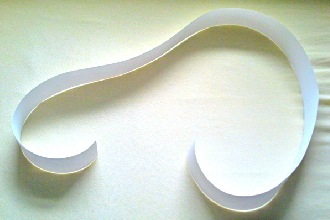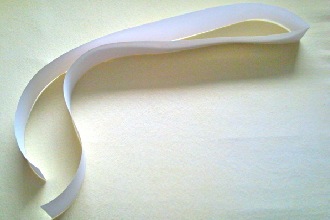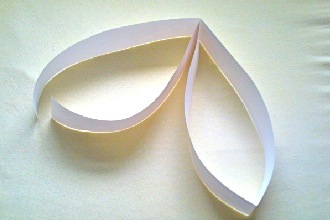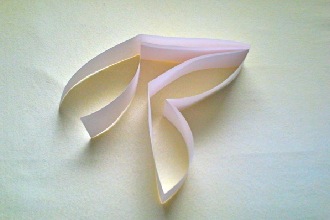Skip over navigation
Take a long (at least 200cm) piece of narrow paper:

Fold it in half by taking the right end over to the left (the pictures show it slightly opened just to make it clearer):

Fold it in half again, right over left:

and again:




Or search by topic
Number and algebra
Geometry and measure
Probability and statistics
Working mathematically
Advanced mathematics
For younger learners
Paper Curves
Age 7 to 11
Challenge Level 





Take a long (at least 200cm) piece of narrow paper:

Fold it in half by taking the right end over to the left (the pictures show it slightly opened just to make it clearer):

Fold it in half again, right over left:

and again:

(It may be that you always prefer to fold
left over to the right - that's ok, as long as you are always doing
the same!)
THEN
1. Keep on
folding into halves as many times as you can.
2. Press VERY
hard onto the fold to make good creases.
3. Open out
the paper so that it stands up on edge like in the pictures and
make each fold a right angle (re-creasing may be necessary, but do
not reverse the fold).
4. Stand a
long way above and look down at what you can see!
5. Discuss
with others what you notice.
You may also like
Sponge Sections
You have been given three shapes made out of sponge: a sphere, a cylinder and a cone. Your challenge is to find out how to cut them to make different shapes for printing.
Plaiting and Braiding
This article for students gives some instructions about how to make some different braids.
Celtic Knotwork Patterns
This article for pupils gives an introduction to Celtic knotwork patterns and a feel for how you can draw them.

